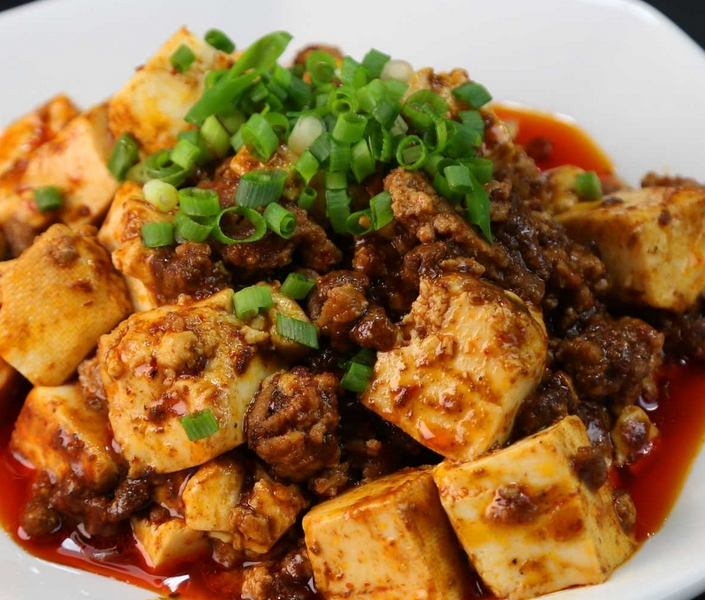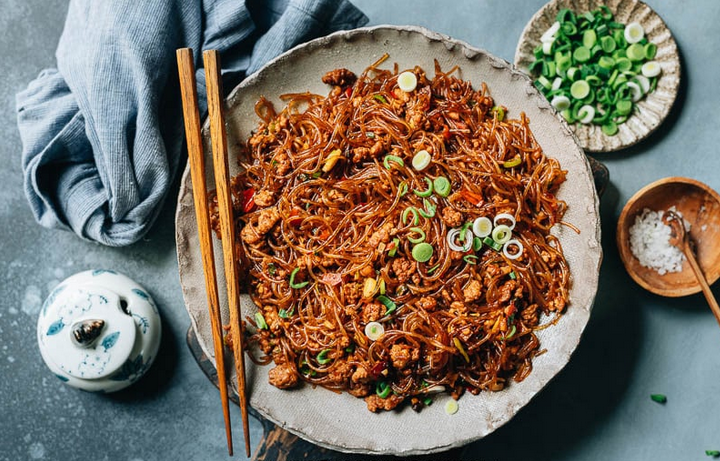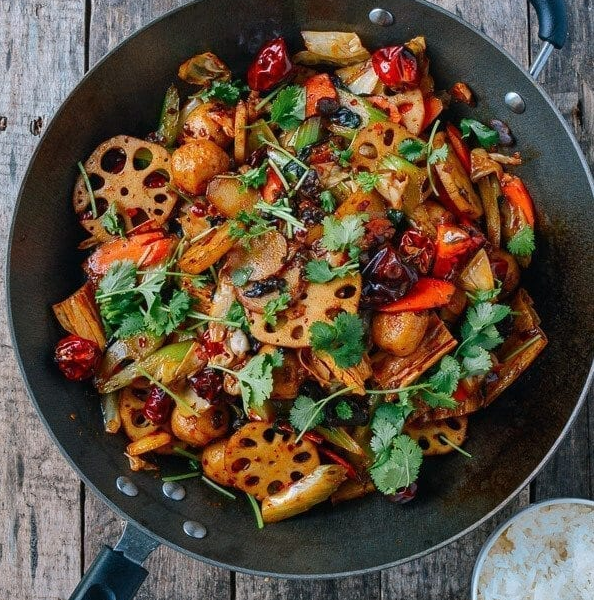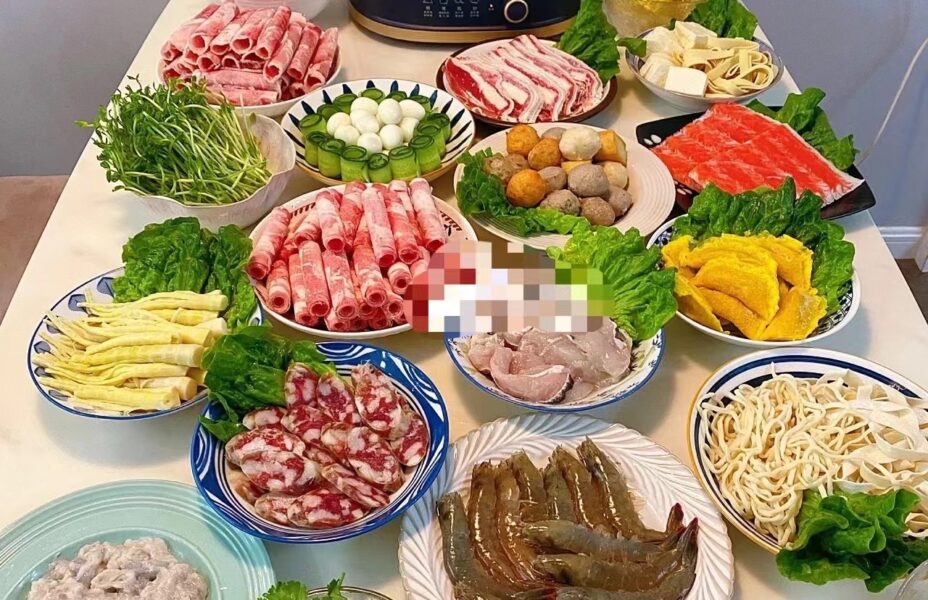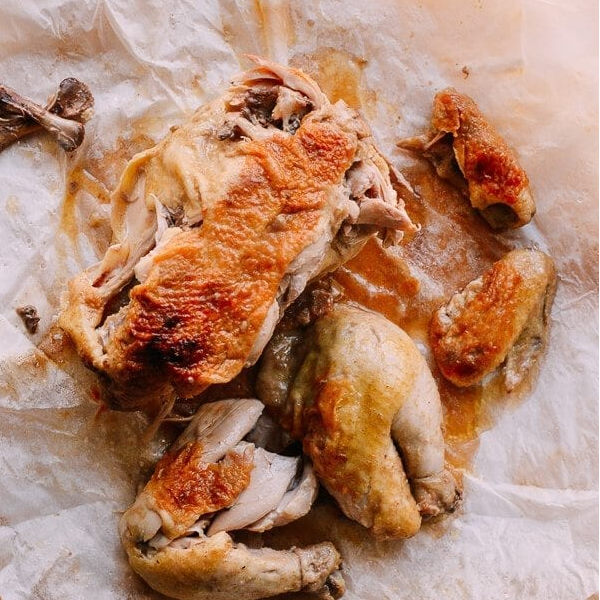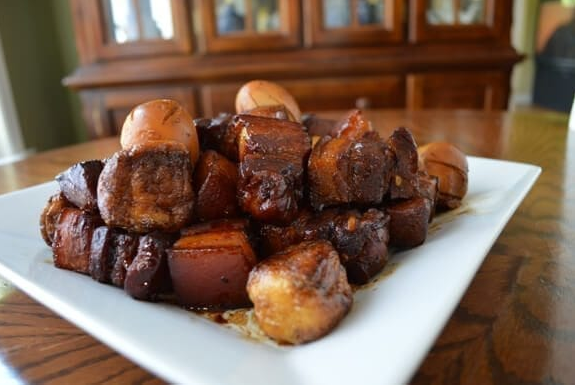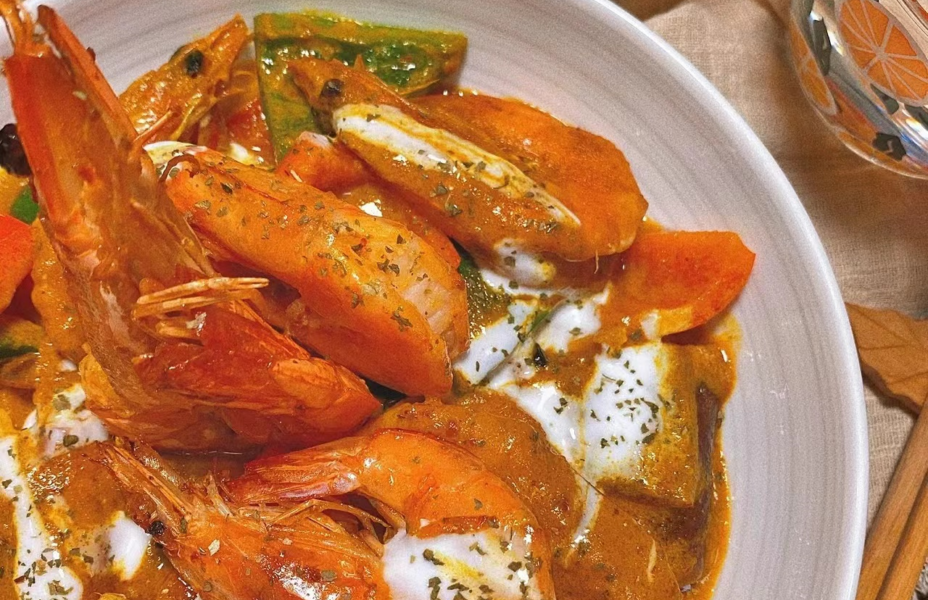spicy beancurd
Bean curd gets a delicious kick of spicy flavor in this dish. Serve it over rice for a delicious weeknight meal. Authentic Szechuan seasonings and spices add amazing flavor to this dish. You can simply reduce the amount of chili peppers to reduce the spice level.
What Is Szechuan Style Bean Curd?
Szechuan cuisine is known for its spicy dishes. Szechuan style bean curd is flavored with traditional Szechuan spices like Thai bird chili peppers, dried red chilis, and Sichuan peppercorns. This dish also includes ground pork and additional seasonings. It’s delicious served on rice.

Ingredients You’ll Need
- silken tofu
- ground pork
- oil
- Thai bird chili peppers
- dried red chilies
- Sichuan peppercorns
- minced garlic
- minced ginger
- spicy bean sauce
- chicken broth
- cornstarch
- sesame oil
- sugar
- green onion
How to Make Bean Curd Szechuan Style
- Heat a wok or skillet over low heat. Add oil and both the Thai bird chili peppers and the dried red chilies. Stir occasionally until fragrant. When done, remove the peppers and the oil from the heat and set aside.
- Add the remaining oil to the wok over medium heat. Stir in the ginger and cook for 1 minute, then add the garlic and cook for another minute. Increase the heat to high and add the ground pork. Break the meat up and stir often until fully cooked. Add the Sichuan peppercorns and stir for about 15-30 seconds.
- Add the spicy bean sauce to the wok and stir to combine. Add the chicken broth and stir. Let the mixture simmer for about a minute. Add water and cornstarch to a small bowl to make a slurry. Mix until incorporated.
- Add the cornstarch mixture to the wok and stir. Cook until the pork mixture begins to thicken. Note that if it gets too thick, you can add a splash of water or chicken stock.
- Add the reserved chili oil and peppers. Stir the oil and peppers into the pork mixture along with the tofu. Gently toss the tofu so it’s incorporated into the pork mixture. Cook for 3-5 minutes and add the sesame oil, sugar, and scallions.
Szechuan Peppercorn
Even though Szechuan peppercorns aren’t spicy, they do create a numbing sensation in the mouth. They’re available to purchase in most Asian supermarkets and online. If you can’t source them, regular black peppercorns or coriander seeds can be used instead.
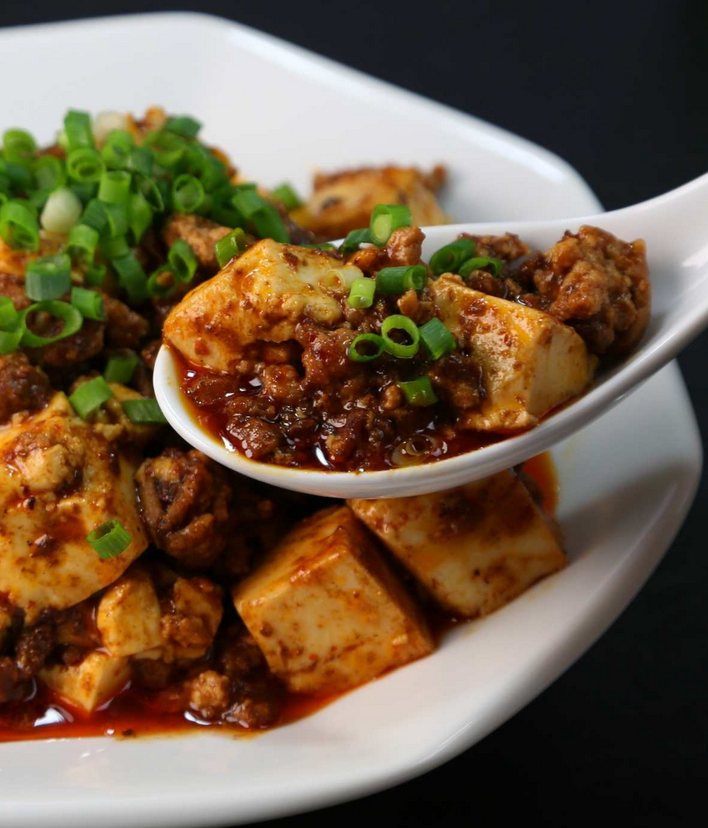
What Is The Difference Between Tofu And Bean Curd?
Tofu and bean curd are essentially the same. The key difference is in the production process. Tofu is made by boiling water and soybeans together until a soft paste is formed. The paste is then filtered and pressed into blocks. Bean curd is made by curdling the soy milk and then pressing the curds into soft blocks.
What Is Szechuan Style?
Szechuan style refers to a traditional style of cooking in Szechuan Province. This area of China has very high humidity and many rainy days. It is believed that red pepper helps to reduce internal dampness which is why Szechuan dishes include hot peppers. In addition to pepper, Szechuan dishes often include garlic, ginger, and spicy bean sauce.
Is Bean Curd Szechuan Style Vegan?
This dish includes ground pork. To make it vegan-friendly, leave the pork out and add a good amount of fermented bean paste or finely chopped shiitake mushrooms to give the dish more flavor.
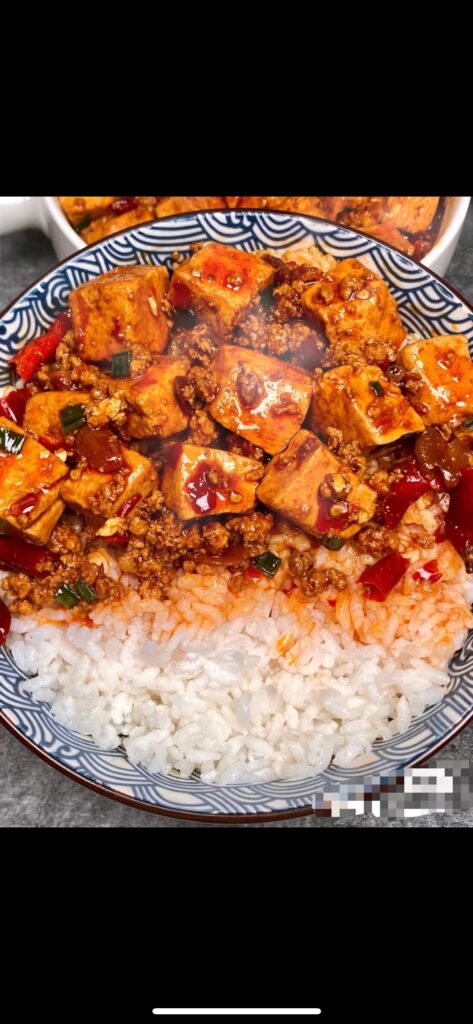
Kam’s court, a chinese restaurant in Charmhaven, which was established in 1992. A friendly, family restaurant that has always been a good party place for family gatherings. We provide delicious and popular Chinese cuisine and are licensed. We invite you to come and enjoy our warm and friendly hospitality.
Stir Fried Vermicelli with Pork
Ma Yi Shang Shu, or stir fried vermicelli with pork, is a perfect quick weekday dinner dish that is so flavorful yet easy to put together. A Sichuan classic, it features tender mung bean vermicelli noodles braised in a savory aromatic sauce with ground pork, spiced up with chili bean paste. All you need is 20 minutes to put it together – top it on a bowl of steamed rice for a great dinner!
Some Chinese dishes have the weirdest names. Such as Husband and Wife Lung Slices (Fu Qi Fei Pian), Saliva Chicken (Chicken in Red Oil), and this one – translated literally it means Ants Climbing a Tree. Sometimes Chinese restaurants need to be creative and give a dish an interesting name to lure their guests in. For example, using the name “Husband and Wife’s Special” instead of lung pieces. And once you get past the sound of the name and try out the dish, you’ll often find them super delicious.
What is Ma Yi Shang Shu
Ma Yi Shang Shu, or Ants Climb a Tree, is famous Sichuan dish. Rest assured, it does not contain any ants. It is made with braised vermicelli noodles and ground pork in a slightly spicy and savory sauce, along with aromatics. When you serve the dish by pulling up the noodles with chopsticks, you will notice small bits of pork clinging to the noodles. And that’s where the name of the dish comes from – because it resembles ants climbing up a tree branch.
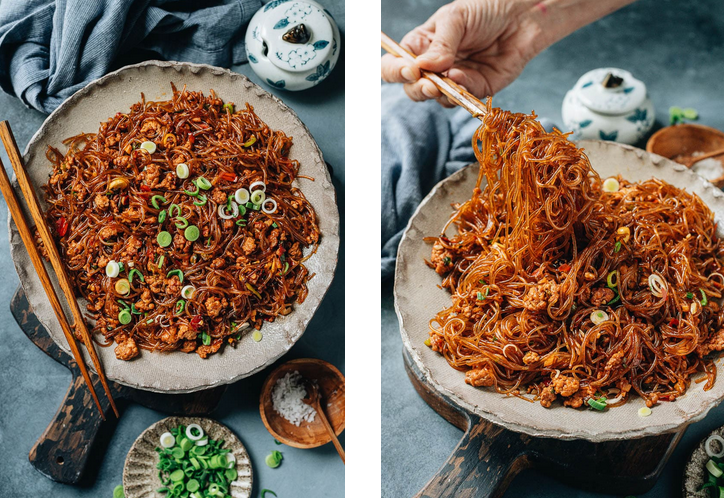
What type of vermicelli noodles to use
To create the most authentic experience, you should use mung bean vermicelli noodles for Ma Yi Shang Shu. Also called bean thread noodles or cellophane noodles, they are dried threads of white noodles. Once cooked, they will expand and become more transparent. Compared to rice vermicelli, they have a softer and smoother texture. Traditional Ma Yi Shang Shu usually uses thin thread noodles. But I’ve used the thicker type in the past and really liked the result. You can find the mung bean vermicelli at your local Asian market or on Amazon.
If you cannot find the mung bean type, sweet potato vermicelli noodles can be a great replacement.
Doubanjiang (Fermented Spicy Bean Paste)
Doubanjiang, also known as spicy fermented bean paste or broad bean sauce, is one of the most important ingredients in Sichuan cuisine. It has a strong fermented savory, salty and spicy taste. This recipe uses a very simple sauce. But with doubanjiang, everything immediately becomes super flavorful.
Try to find “Pixian Broad Bean Paste” at your Asian market. Pixian is a small county in Sichuan province that produces the best broad bean paste. If you’re using this brand, you’re already halfway there. You can also purchase this brand on Amazon here.
Mise en place
When you’re ready to cook, your table should have:
- Mixed sauce
- Doubanjiang
- Chicken broth
- Chopped ginger, garlic and green onion
- Ground pork
- Soaked vermicelli noodles
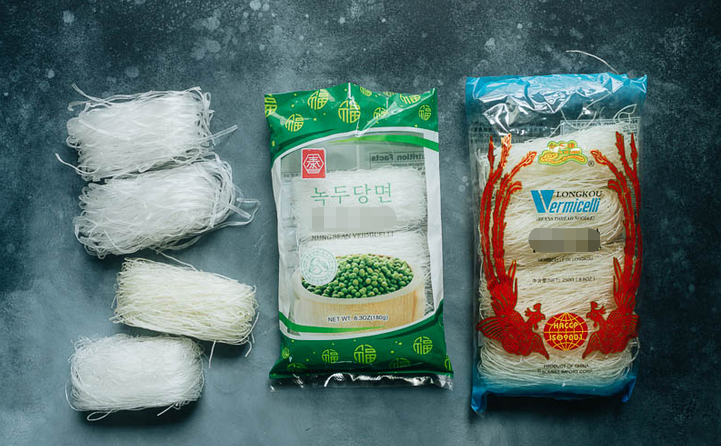
What pan to use
A large nonstick skillet is the best to make Ma Yi Shang Shu. Rehydrated vermicelli noodles are very starchy and can easily stick to the pan when they’re not floating in the broth. And for Ma Yi Shang Shu, the broth needs to be cooked down completely at the end for the best result. Use a nonstick skillet to prevent the noodles from sticking to the pan as you finish cooking.
In Chinese restaurants, this dish is usually cooked in a hot wok. At the end of the cooking, the chef would toss the noodles very quickly at high heat, to impart a heavenly smoky taste. This recipe does not use that technique because it’s challenging to do in a home kitchen setting. Plus, you will need to use much more oil (restaurants opt to use pork lard sometimes), so the noodles don’t stick to the wok. I think my home-style version tastes just as great, and it uses a lot less oil.

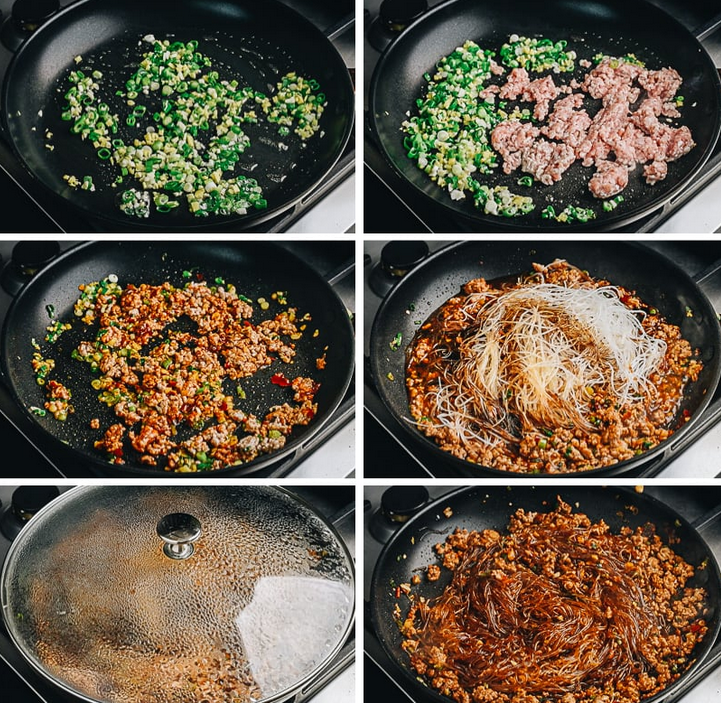
How to cook Ma Yi Shang Shu
Cooking Ma Yi Shang Shu couldn’t be easier. All you need is:
- Gently saute the aromatics
- Cook the pork
- Mix in the doubanjiang
- Add the broth and noodles and the sauce
- Cover to steam the noodles
- Uncover and finish up by boiling down the broth
Once done, the noodles will soak up the super flavorful broth that is infused with heavenly flavors from the aromatics and the pork. You can enjoy the dish by itself but it also goes great with steamed rice.
Kam’s court, a chinese restaurant in Charmhaven, which was established in 1992. A friendly, family restaurant that has always been a good party place for family gatherings. We provide delicious and popular Chinese cuisine and are licensed. We invite you to come and enjoy our warm and friendly hospitality.
Spicy Numbing Stir-fry Pot
Ma la xiang guo is definitely a “newer” dish. It doesn’t have hundreds of years of history, but I can tell you, this dish is a legend in the making.

Ma la xiang guo is very heavily spiced, but not just by chilies alone. There are tons of spices added, that until now were mostly a delicious delicious mystery to us. Living in Beijing, we couldn’t get enough of this dish––spicy food lovers will rejoice when they taste it! I recently made this dish (minus the fish balls) for a vegan friend, he said that this is the best dish he ever had at our house.
To show you why we were so obsessed with it, let me shed some light on how it’s done in a Ma La Xiang Guo restaurant. A server hands you a menu after you are seated. You’ll notice that everything on the menu consists of raw ingredients, and each comes with a price.
After examining all the delectable choices, you pick your choice of meats, tofus, seafood, and vegetables. There is really no right or wrong way to make your selections, so go ahead, be a picky eater and only select ingredients that you fancy. Eight to ten ingredients is perfect for four to six people; any more and you’ll be served up a mountain of food with nowhere to go other than the back of your fridge.
The server then will ask you how spicy you like it, from mild, to medium, to hot. My advice is to go slow if this is your first time, and select the mild, which I think is the right amount of heat for optimal enjoyment. After a short wait, a large vessel of piping hot and delicious ma la xiang guo will appear at your table, along with rice for everyone. BTW, don’t forget to order plenty of water. You will need it.
At mom-and-pop restaurants, fast-food chains, and food courts, you can select ingredients in a buffet-style line, and they are ordered by weight. After you make the selections, they weigh the vegetables separately, because protein costs more. This dish can definitely become expensive very fast. Last time, we ordered it in the Flushing Mall’s food court and were so disappointed—it tasted nothing like what we had in Beijing. So what do I do? Find a way to make it myself, of course!
This recipe is mostly vegetables, but we added some fish balls, because let’s face it, who doesn’t like fish balls? Just remember…all the vegetables need to be blanched first. And if you want to add meats like chicken and/or beef, marinate them with a little oil, cornstarch, and soy sauce first and sear them separately so they are cooked before you add them in with the rest of the ingredients. Another a quick tip: a great time to make this dish is at the end of the week, when you find yourself with a little of this and some of that, and don’t know what to do with the ingredients. Simply combine all the ingredients to make a wonderful, vibrant new dish.

For the vegetables:
3 celery stalks, thinly sliced
2 carrots, thinly sliced
2 potatoes, sliced
2 cups rehydrated wood-ear mushrooms(黑木耳), rinsed and drained
3 long pieces of rehydrated tofu bean threads (Fǔzhú 腐竹), drained
4-6 shiitake (rehydrated if using dried shiitake) mushrooms, washed and sliced
a handful of sliced lotus root.
First, bring a pot of water to a boil, and blanch all the vegetables (potatoes and carrots will take slightly more time), then transfer to an ice bath. Drain thoroughly and set aside.
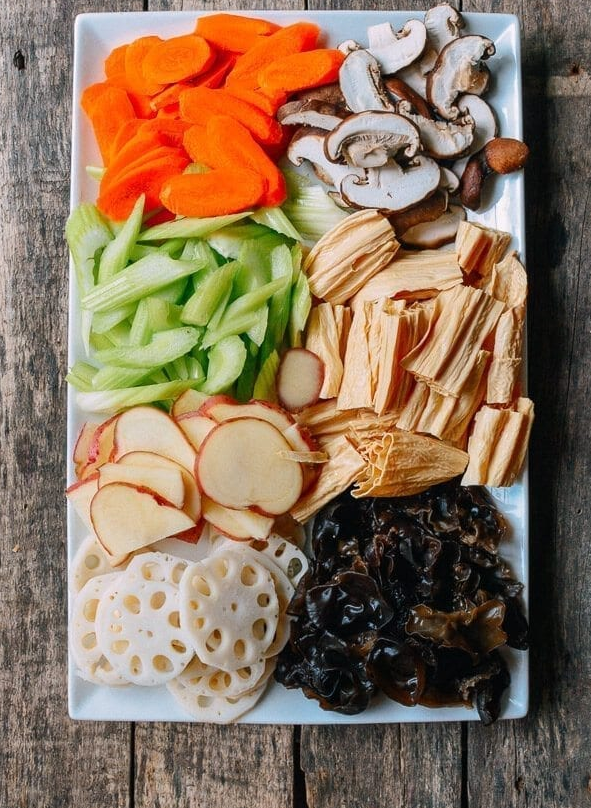
For the spice-infused oil:
1/3 cup oil
3 star anise
2 tablespoons Sichuan peppercorn
1 tablespoon fennel seeds
1 black cardamom
1 cinnamon stick
3 bay leaves
1 whole nutmeg
1 large dried orange peel
2 pieces dried ginger or 5 slices of fresh ginger
1/4 cup dried red chili peppers (keep them whole to avoid the dish being too hot)
Heat the oil in a wok over low heat, add all the spices, and let them infuse for 20 minutes, until all the spices start to brown. Turn off the heat, and use a slotted spoon to scoop out all of the spices, the oil remain in the wok.
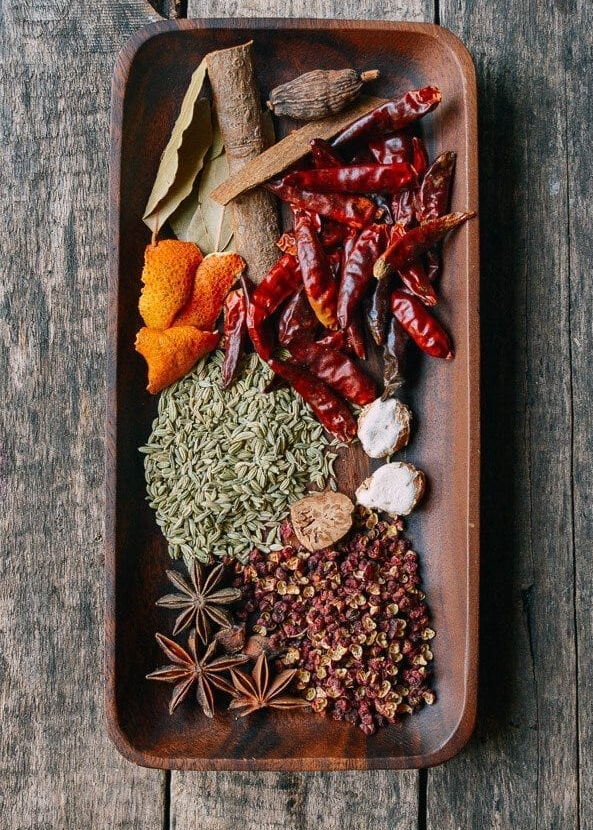
For the rest of the dish:
2 tablespoon spicy red bean sauce
2 tablespoons hot pot soup base sauce
6 slices ginger
8 cloves garlic, smashed
3 shallots, sliced
1 cup dried red chili peppers (keep them whole to avoid the dish being too hot)
3 scallions, chopped
1/4 head cabbage, sliced
1 7 oz. pack fish-balls (optional)
2 tablespoons shaoxing rice wine
1 tablespoon sugar
Salt to taste
a handful of chopped cilantro

Here’s a photo of the hot pot soup base sauce, and a link to buy it (a different brand) on Amazon if you can’t find it in your local Asian grocery store.
To see what spicy red bean sauce looks like, check out our “Sauces, Vinegars, and Oils” section of our Ingredients Glossary, and scroll down to the entry for “Broad Bean Paste or Spicy Bean Paste.”
Turn the heat back on low to medium, add in the hot bean sauce, hot pot soup base sauce, ginger, garlic, and shallots.
Stir-fry and mix everything well for two minutes. Salt to taste.
Transfer to a serving plate (or serve right from the wok), and sprinkle with chopped cilantro.
Serve your Ma La Xiang Guo with plenty of steamed rice.
Kam’s court, a chinese restaurant in Charmhaven, which was established in 1992. A friendly, family restaurant that has always been a good party place for family gatherings. We provide delicious and popular Chinese cuisine and are licensed. We invite you to come and enjoy our warm and friendly hospitality.
Numbing Sichuan-Style Hot Pot
Traditionally, Sichuan hot pot is made with caiziyou (roasted rapeseed oil), which imparts a lovely vegetal, toasty aroma. If you can’t find it, you can substitute with peanut oil or another vegetable oil. Though I recommend using dried Sichuan chiles such as chaotian (often called “facing heaven” in English) or er jing tiao for their unparalleled fragrance, they are also more difficult to find in the U.S. The tianjin, or tien tsin, pepper is much more common at Chinese or Asian supermarkets in the U.S. and can definitely do the trick, but in my experience, they are not quite as aromatic and are also a bit spicier.

A note on heat: Sichuan hot pot is quite spicy, and the numbing sensation of Sichuan peppercorns feels rather like mild electric currents buzzing on the tongue. In other words, if you’re not yet familiar with Sichuan cuisine, do prepare your mouth and mind to be walloped by a sensory explosion. Feel free to adjust amounts of the dried chiles and Sichuan peppercorns to suit your spice tolerance—but the mala sensation, of course, is what makes this a Sichuan-style hot pot!
For dunking ingredients, I usually pick up thinly sliced raw meats from the frozen section of Chinese or Asian supermarkets; they’re precut with hot pot eaters in mind and cook quickly in the broth. Prior to eating, I defrost them along with any other frozen ingredients, like seafood or meatballs. Vegetables should always be cut into sizable slices or chunks so they’ll be easier to fish out of the pot. Variety is key here! The uniqueness of Sichuan hot pot really shines when the pot includes ingredients of many contrasting textures, each of which will carry that mala flavor differently.
You most likely won’t need all of the suggested dunking ingredients, unless you’re hosting a very large get-together or holiday party. A loose guideline would be to select two or three types from each category: meats, seafood, vegetables, and other ingredients (like mushrooms, eggs, or tofu puffs). Larger parties (and hungrier eaters), however, generally call for even more variety of ingredients. As for amounts of each ingredient, I would generally recommend preparing three to four pieces of each meat or seafood and five to six pieces of each non-meat ingredient for every diner (with the assumption that some will eat more and some will eat less).
For dipping sauce, I love starting with toasted sesame oil and finely grated garlic in a 1:1 ratio, which complements the intense flavors of the hot pot really nicely. You can simply provide these ingredients and allow diners to mix their own sauce to taste.
Ingredients
Hot Pot Base
2 cups (50 grams) dried Sichuan chile peppers such as facing heaven or er jing tiao, divided (see Author Note)
1/4 cup (14 grams) whole green Sichuan peppercorns, divided
1/4 cup (14 grams) whole red Sichuan peppercorns
2 (6 grams) black cardamom pods
2 (6 grams) cinnamon sticks
6 dried whole bay leaves
3 (4 grams) star anise
1 tablespoon (6 grams) cumin seeds
1 tablespoon (6 grams) fennel seeds
6 cloves
1/2 cup Shaoxing cooking wine
1 cup roasted rapeseed oil or peanut oil
1 cup beef tallow (or substitute with more roasted grapeseed or peanut oil)
10 (180 grams) scallions, roots trimmed (6 finely chopped, 4 cut into 3-inch segments)
1 (4-inch) piece (30 grams) ginger, peeled and roughly chopped
7 garlic cloves (35 grams), roughly chopped
1 stalk lemongrass, tough outer layers peeled, roughly cut into 1-inch chunks
1/2 cup (135 grams) doubanjiang (chile bean paste)
1/4 cup (70 grams) douchi (fermented black beans)
1/2 cup (38 grams) Sichuan chile flakes
1 teaspoon (5 grams) rock sugar
5 cups beef, pork, or chicken stock (homemade or boxed), plus more for topping off
1 cube mushroom or chicken bouillon
Kosher salt, to taste
Dunking Ingredients (pick 2 to 3 options from each section):
Raw thin-sliced cuts of beef, lamb, pork
Raw scallops, shrimp, squid, fish balls, crab sticks, sliced fish fillet (such as tilapia, cod, or halibut)
Raw offal meats (e.g., chicken gizzards, beef tripe)
Whole bok choy leaves, whole crown daisy leaves, winter melon (chopped into 1-inch chunks), Napa cabbage (chopped into 2-inch pieces), seaweed knots
Thinly sliced daikon, turnip, lotus root, potato
Shiitakes (cut into bite-size chunks), portobello (cut into bite-size chunks), or whole enoki mushrooms
Cooked and peeled whole quail eggs
Fried tofu puffs
Non-starchy noodles (e.g., sweet potato)
Dipping Sauce Options:
Toasted sesame oil
Finely grated garlic
Chopped fresh scallions
Chopped fresh cilantro
Soy sauce
Black vinegar
Directions
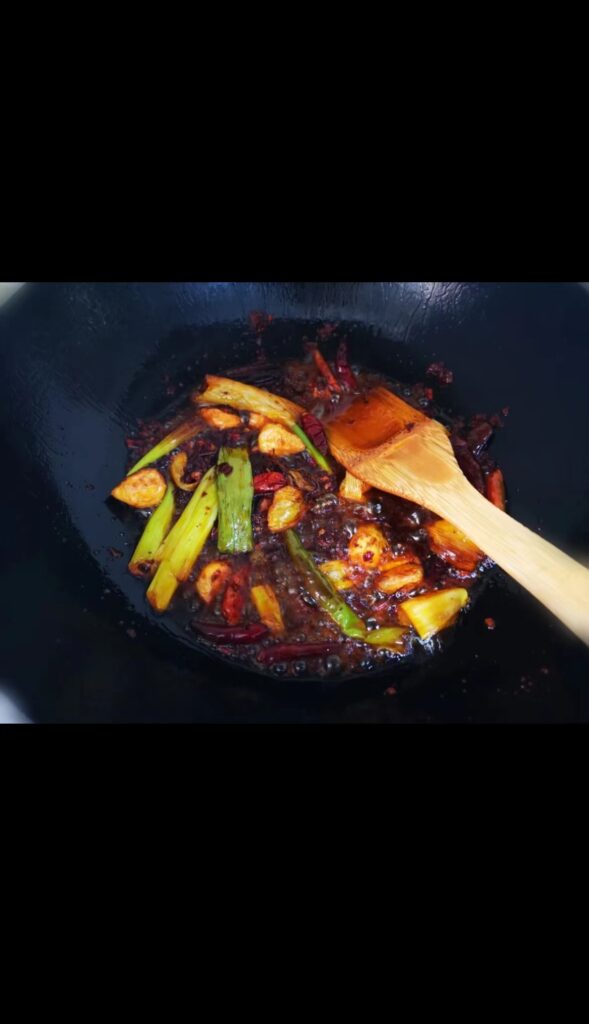
- To a small saucepot, add 1½ cups of the dried chile peppers. Pour in enough water to completely cover the peppers. Turn the heat to high and bring it to a boil. Let it boil for 20 minutes. Drain the chiles, then chop or pulse in a food processor into a rough paste. Set aside 2 tablespoons of the whole green Sichuan peppercorns. In a mortar and pestle or spice grinder, grind the remaining green peppercorns, the red peppercorns, cardamom pods, cinnamon sticks, bay leaves, star anise, cumin, fennel, and cloves until they are coarsely ground. Pour the ground spices into a small bowl and cover with ½ cup of the cooking wine. Let this mixture steep for 30 minutes while you prepare the other ingredients.
- In a wide, shallow soup pot over medium heat, add the oil and beef tallow (if using), and heat it to a gentle simmer. Add the finely chopped scallions, ginger, garlic, and lemongrass and cook until fragrant but not browned, about 2 minutes. Add the chopped chiles, doubanjiang, douchi, and chile flakes. Stir to combine and let it gently cook on low heat for 15 minutes.
- Add the ground spices from Step 1 to the pot, along with their soaking liquid. Add the rock sugar. Stir to combine and let the mixture gently simmer over low for another 10 to 15 minutes, allowing some of the liquid to cook off. Pour in 5 cups of stock and bring the soup to a boil. Once it boils, reduce the heat to low and let the broth continue to simmer for 10 more minutes. Turn off the heat, and let the broth steep for at least 30 minutes while you prepare the dunking ingredients. If preparing in advance, let the broth cool before transferring to an airtight container and placing in the fridge.
- When it’s time to eat, use a slotted spoon to remove the solid sediments from the pot. Add in the remaining 2 tablespoons of whole green Sichuan peppercorns, remaining dried chiles, scallion segments, bouillon cube, and salt to taste. Place the pot on a portable electric stove on the dining table, and turn the heat to high. While you wait for the broth to come to a gentle boil, diners can mix their own dipping sauces; I start with a 1:1 ratio of sesame oil to garlic, then add from there to taste. Once the broth boils, reduce the heat to low or medium-low. Dunk ingredients into the broth until cooked through. Meats and seafood cook quickly, so keep an eye on them to avoid overcooking. Use chopsticks or a slotted ladle to retrieve the ingredients, then dip them in the sauce before eating. If the broth starts to run low, top it off with more stock.
Kam’s court, a chinese restaurant in Charmhaven, which was established in 1992. A friendly, family restaurant that has always been a good party place for family gatherings. We provide delicious and popular Chinese cuisine and are licensed. We invite you to come and enjoy our warm and friendly hospitality.
Garlic Parmesan Chicken Wings
Garlic and Parmesan are the ultimate dynamic duo. They’re the BFFs of the food world, teaming up to add big flavor to favorites like garlic bread, garlic parmesan french fries, and now, these crispy chicken wings. Whether you’re serving them with a full line up of game day appetizers or enjoying them as a main course for an Italian-style family dinner, these deeply savory Garlic Parmesan Chicken wings will not disappoint!

Is it better to bake or fry chicken wings?
Baking is better here. Fried wings are great, but you can get them just as crispy in the oven, too. Plus, we added baking powder to get them even crispier. It mixes with the chicken juices while the wings bake, bubbling and browning to create a golden, crispy crust.
Should I use fresh Parmesan?
Yes! While it’s more pricy than the cheese in the little green can, freshly ground Parmesan has much more flavor. It also has a little more moisture, so it’s not so dusty when it’s sprinkled over the finished wings. But if canned Parmesan is all you’ve got, go for it—these wings will still be delicious! If you want to substitute pre-grated Parmesan for the ground Parmesan cheese, use about 1/3 of a cup in place of the ground 3 oz. If grinding the Parmesan fresh, use an aged Parmesan (at least 15 months). It will make nice crumbles when processed, and won’t melt into the wings.
These wings look gorgeous on a serving platter, but you can also serve them straight from the vessel that you use to toss them in the delicious garlic butter. Just be sure to pick a beautiful bowl!
Ingredients
4 lb.
chicken drumettes and flats (wing tips removed)
Nonstick cooking spray
2 tsp.
kosher salt
4 tsp.
baking powder
1/2 tsp.
garlic powder
3 oz.
block Parmesan cheese, broken into chunks
1/2 c.
unsalted butter, melted, cooled slightly
4
garlic cloves, grated or minced
1 tsp.
red pepper flakes
2 tsp.
lemon juice
Chopped fresh chives, for garnish
Directions
- 1 Pat the chicken wings dry with paper towels. Line 2 rimmed baking sheets with aluminum foil and top each with a wire rack. Spray the racks with nonstick cooking spray.
- 2Stir together the salt, baking powder, and garlic powder in a large bowl. Add the chicken wings and toss until evenly coated. Divide the wings evenly between prepared racks, leaving space between each wing. Let stand at room temperature for 1 hour or refrigerate, uncovered, for up to 24 hours.
- 3Preheat the oven to 450°F with racks in the upper and lower thirds of the oven. If the wings were refrigerated, let stand at room temperature for 30 minutes.
- 4Bake the wings for 25 minutes. Flip the wings over and rotate the baking sheets from upper and lower oven racks. Continue baking the wings until crispy and golden, 25 to 30 minutes.
- 5While the wings are baking, process the Parmesan in a food processor until finely ground, 30-45 seconds. Reserve 2 tablespoons of the Parmesan for garnishing. Transfer the remaining Parmesan to a large bowl and stir in the butter, garlic red pepper flakes and lemon juice.
- 6Transfer wings to the bowl with the butter mixture and toss to coat. Transfer the wings to a serving platter. Sprinkle with reserved Parmesan and garnish with chives.
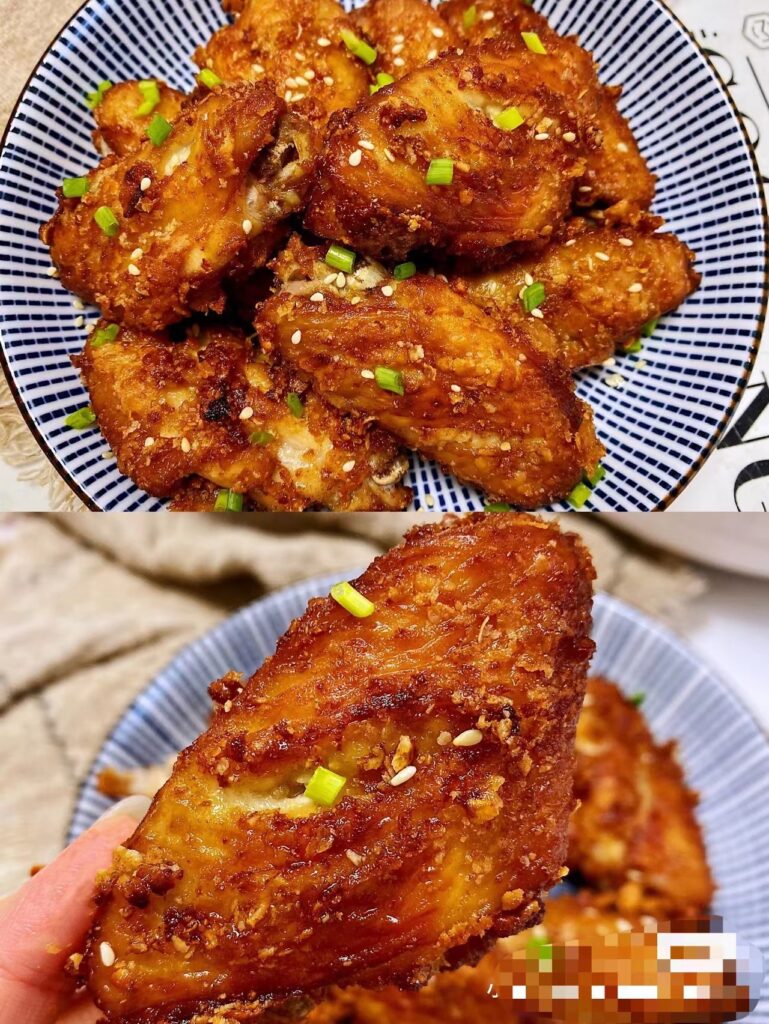
Kam’s court, a chinese restaurant in Charmhaven, which was established in 1992. A friendly, family restaurant that has always been a good party place for family gatherings. We provide delicious and popular Chinese cuisine and are licensed. We invite you to come and enjoy our warm and friendly hospitality.
Chinese Hamburger Roujiamo Recip
Roujiamo is a Chinese hamburger or pancake. This hamburger is stuffed with minced pork with tailored herbal seasoning. The bread has a meaty background with rich seasoned juices. With a bite, you will find Roujiamo is so fantastic that you cannot resist.
Ingredients
2 fried pancake
250g pork
soup stock
scallions
ginger slices
amomum tsao-ko
clove
Sichuan pepper
aniseed
tangerine peel
fennel
angelica root
cinnamon
cooking wine
light soy sauce
dark soy sauce
rock sugar
salt
Kitchen Tips
A few side notes before we get started:
- I’d encourage you to try cooking the meat the day before you’re looking to serve it, in order to let the sauce soak in overnight and intensify the flavors. Heat it up the next day before serving.
- Don’t overcook the pork belly. If it’s too soft, you won’t get that “sink your teeth into it” experience!
- If you like it spicy, chop one or two raw jalapeno peppers finely, and mix in with the meat mixture. You could get really crazy and use pickled banana peppers too!
- If you have leftover buns, store them in a zip-lock bag to prevent them from drying out.
- And if you only want to make the meat filling and use a hamburger bun or a Kaiser roll instead.
Keep the pork belly whole, or cut it into large, 4- to 5-inch chunks. Place the pork belly in a medium pot, and fill it with just enough water to cover it. Bring the water to a boil.
Once the pork has gone opaque and appears cooked on the outside, shut off the heat, remove the pork from the pot, and rinse it clean under running water. Dump out the water and clean the pot.
Put the pork belly back in the clean pot, and add 3 cups of water, the Shaoxing wine, rock sugar, light soy sauce, dark soy sauce, scallions, ginger, star anise, cinnamon stick, black cardamom pod (tsaoko), galangal or sand ginger, Sichuan peppercorns, and bay leaves.
Bring everything to a boil, then immediately turn down the heat to low and simmer for 90 minutes to 2 hours, until fork tender. To test it, stick a fork into the meat. It’s done if you can pull the fork out easily. Do not use high heat when simmering to avoid drying out the sauce. Add salt to taste.
While the pork is simmering, make the buns for your Chinese hamburgers. To a mixing bowl, add the flour, yeast, and salt. Slowly add the warm water, mixing and kneading until it forms a smooth dough ball. Once a dough ball is formed, knead it for another 10 minutes to build up the gluten in the dough–this will make the buns chewier.
You can also use an electric mixer with the dough hook attachment for this. The dough should feel soft and easy to work with. Cover the dough, and let it proof at room temperature for about an hour until it doubles in size.
After proofing, knead the dough for about 5 minutes to get rid of any air bubbles. Divide the dough into 12 equal pieces. Cover the dough balls with a kitchen towel to prevent them from drying out while you’re shaping the buns.
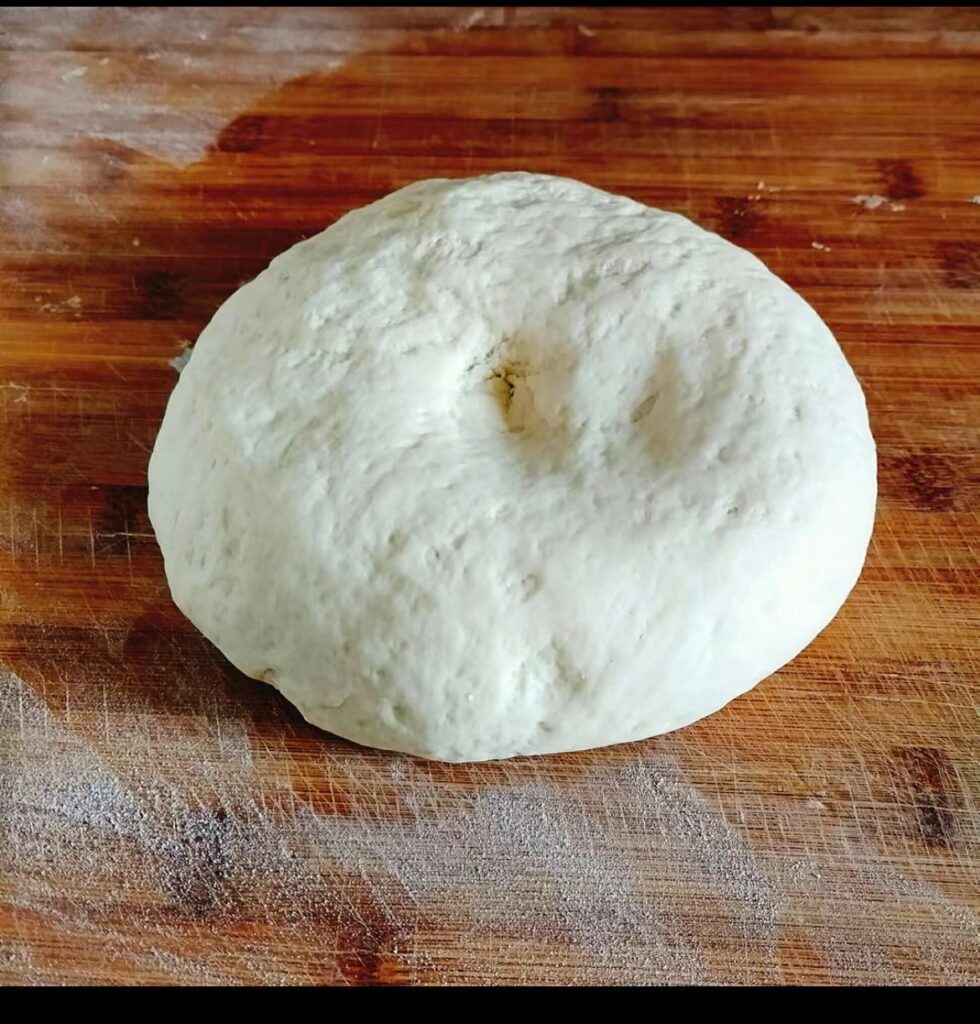
To shape the buns, take each dough ball and roll it out into a cigar-like shape. Next, roll it out into a longer and narrower strip…

Roll it up into a bundle, with the loose end tucked underneath.

Turn it on its side, so that the swirls are facing up.

Press it down with your palm.

Now roll it out into a disc about 4 inches in diameter. Repeat these steps for all of the dough balls. Cover the shaped buns with a dry kitchen towel, and let rest for 20 minutes before cooking.

Pre-heat a flat-bottomed pan or cast-iron skillet over medium heat. Place the buns in the pan about an inch apart (no oil is necessary). Cover the lid, and let the buns cook for 2 minutes on each side. The heat shouldn’t be too high, or your buns may burn. No one likes burned buns. After cooking the buns for 2 minutes on each side, remove the lid, and cook each side for another minute or so until the entire bun is golden brown.

Continue in batches until the buns are all cooked.
To serve, take out the pork, coarsely chop it, and transfer it to a bowl. Mix in the chopped cilantro, and add the sauce from the meat to your desired consistency.
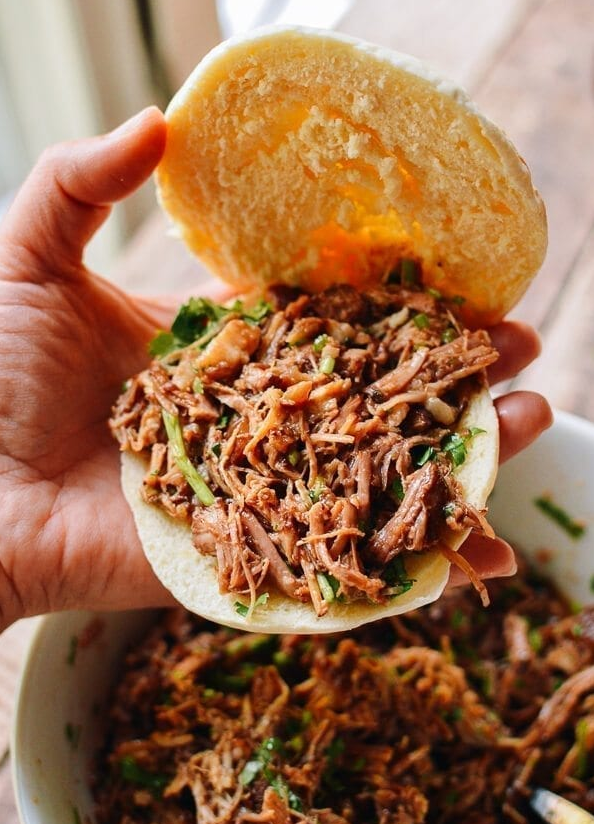
Think Asian sloppy joe–you could go really saucy or have a drier sandwich. Toss everything together, slice open a bun, load the meat inside…
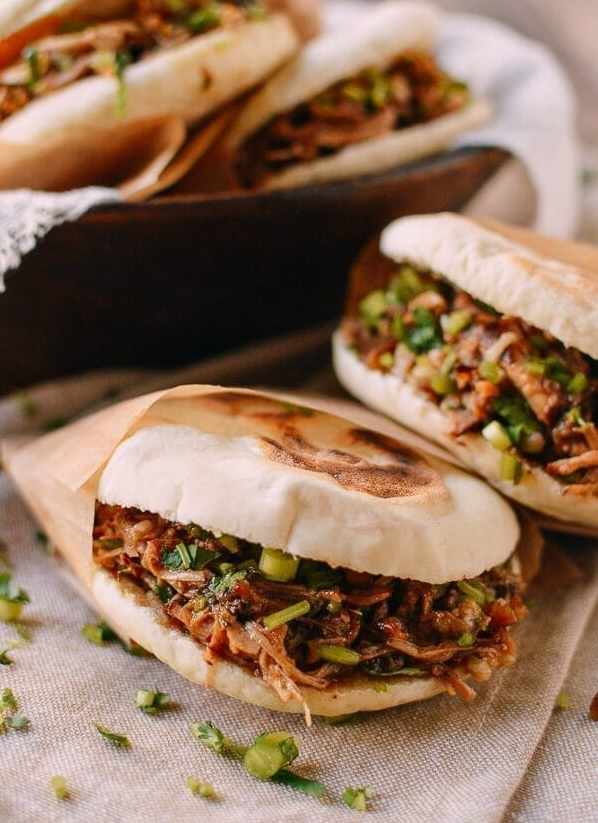
And it’s time to sink your teeth into this scrumptious little bundle of porky goodness, Rou Jia Mo Chinese Hamburger.
Kam’s court, a chinese restaurant in Charmhaven, which was established in 1992. A friendly, family restaurant that has always been a good party place for family gatherings. We provide delicious and popular Chinese cuisine and are licensed. We invite you to come and enjoy our warm and friendly hospitality.
Salt Baked Chicken
Origins of Salt Baked Chicken
This is the real deal, true blue recipe for Salt Baked Chicken. As for the origin of the dish, there are a few folk tales out there that people will tell you, but I like this one the best:
As the story goes, a reliable salt merchant was gifted with a live chicken after a job well done. Due to the many days it would take for him to journey home, he decided to dress the chicken and wrap it with salt to preserve its freshness.
But while traveling, he could not resist, and decided to roast it in salt due to his lack of cooking equipment. He was so delighted with the taste that he told his wife about his newfound creation upon arriving home.
His wife then carefully followed the steps and re-created it, and that’s how Salt Baked Chicken was born. It’s not a very progressive story, and who can say if it’s fact or fiction (or maybe historical fiction?) but I do hope that you’ve enjoyed this little bit of poultry drama.
A Traditional Recipe
This recipe is how Salt Baked Chicken is traditionally made. In stores you can find a pre-prepared salt baked powder seasoning packet that many people like to use pictured below.
And I’m not at all exaggerating when I say that we, the Woks of Life, all think that it is the tastiest chicken we’ve ever had–as in compared to all the chicken we have collectively ever eaten (which is a lot). It’s an enormous bill of approval, because we’ve posted many pretty delicious chicken recipes over the years, but this Salt Baked Chicken still outshines them all.
A Note on Cookware
So now I know you are excited, but before we start, let me talk briefly about what cookware you should use for this recipe. A Chinese clay pot is the more traditional choice, but it will very likely crack during cooking.
I used my heat-tempered clay pot thinking that it would be safe, but after using it to test this recipe a few times, it’s now cracked! This dish is featured on the Chinese TV documentary series, A Bite of China. It’s like Planet Earth, but instead of animals, it’s about the many forms of Chinese home-cooking.
It’s spectacular cinematography and immensely enjoyable entertainment, and I encourage you all to watch—with English subtitles of course. There’s one episode that features a local Hakka man making this chicken just in a regular wok with a lid.
He cooks the salt in the wok first, makes a well in the middle of the hot salt, puts the wrapped chicken in, then piles the salt around the chicken and over the top, and simply covers it with the wok lid. Next time I make this, I will be following his method, so I don’t have to keep replacing my clay pot!
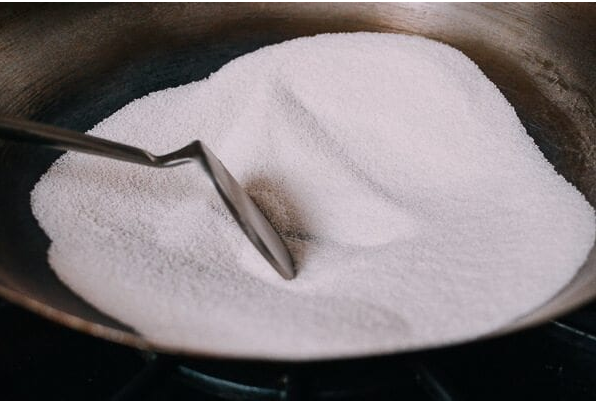

Key Ingredient: Sand Ginger Powder
One last note. Sand ginger powder (沙姜粉, sha-jiang-fen) is not the same as ginger powder. For this recipe, sand ginger powder is just as important as the salt. It cannot be substituted or omitted.
Which makes me wonder, if the folktale of how this recipe was created is true, did the merchant have the sand ginger powder with him, or was it added by another smart person in the years after? Poultry drama season 2 might be in order…
Cooking Tips
- You should have the same amount of coarse sea salt by weight as the weight of your chicken. If you are cooking a 4-pound chicken, then you will need 4 pounds of salt.
- After cooking, once the salt is cooled, discard any of the dis-colored salt (you’ll know because it’s been browned either by heat or exposure to the juices from the chicken). Save the rest, and reuse it for next time.
- After de-boning the chicken, the chicken bones make a wonderful stock or soup base. Do not discard them, please!!! You’ll be missing out on half the value of the recipe, trust me.
Salt Baked Chicken: Recipe Instructions
Rinse the chicken under cold running water. Shake off the excess water and pat the chicken dry with paper towels or a clean dish cloth.
Brush the Shaoxing wine all over the chicken, including the cavity. Next, combine the sand ginger powder, ground white pepper, and 2 teaspoons salt. Rub the mixture all over the chicken, including the cavity.
Now set the chicken on a wire rack, and place it over a tray to catch any drippings. It’s best if you can sit the chicken upright so the liquid in its cavity can drip out. You can use a drinking glass to prop it up. Leave the chicken uncovered and let marinate overnight in the refrigerator. The objective is to dry out the chicken skin.
The next day, take the chicken out of the refrigerator for at least one to two hours before cooking, so the chicken can come up to room temperature. Insert the ginger slices into the cavity and brush the chicken skin with oil. Next, tie up the drumsticks with kitchen twine.
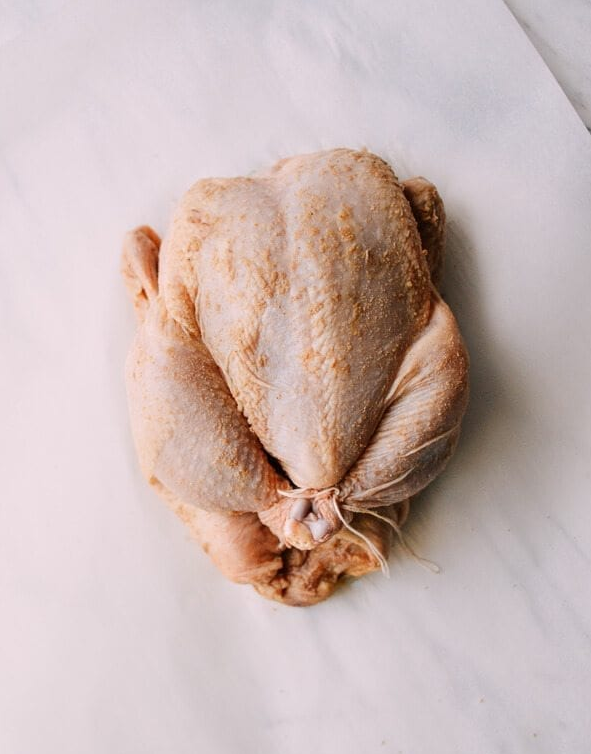
Finally, wrap the chicken with a large piece of parchment paper, then wrap it again with a second piece of parchment with the opening on the breast side. Set the chicken aside.
Now “stir-fry” the rest of the salt in a clean dry wok for about 15 minutes, using medium heat until the salt turns light brown. The salt gets very hot, so be careful not to burn yourself or stir too vigorously.
Next, fill a wok or Dutch oven with about a ½-inch of hot salt spread evenly across the bottom. Position the chicken with the breast side up in the center of the pot.
Next, add the rest of the hot salt onto the chicken to make sure it’s completely covered.
Top your vessel of choice with the lid, and cook over medium heat for 35 minutes. Then turn off the heat, and let it sit on the stove, covered, for another 30 to 40 minutes until the salt is warm to the touch.
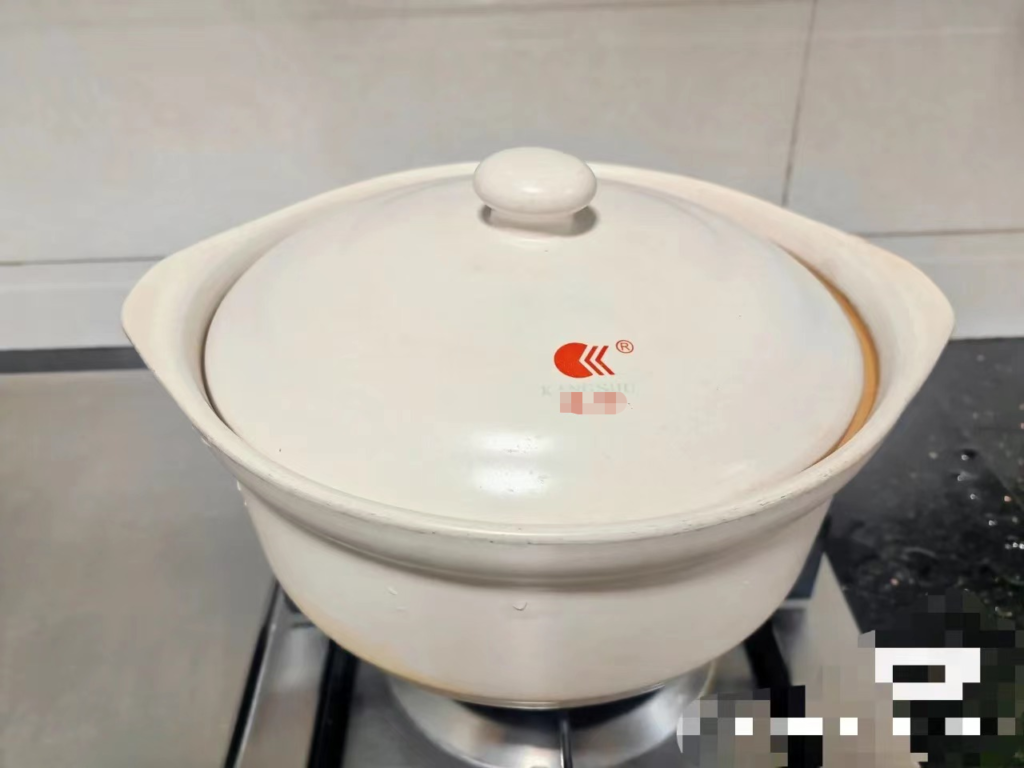
Once the salt is warm to the touch, use a wooden spoon or a spatula to carefully lift the chicken out of the salt. Be very careful–the chicken is still very hot despite sitting with the heat off for 30-40 minutes.
Carefully unwrap the parchment paper, and let it cool slightly until it’s not too hot to handle.
As for how to serve the chicken, this dish is usually served with the meat deboned and pulled apart. You don’t have to follow these steps, but your diners (in our case, Sarah) will appreciate your effort! Plus, the chicken bone and carcass do make a lovely broth.
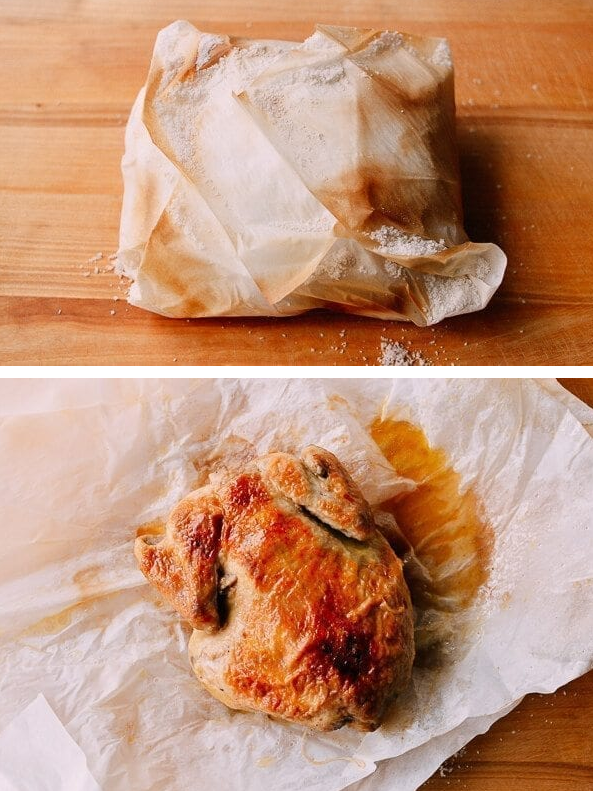
As you pull the meat off the chicken, there will be a lot of juice–do yourself and your diners a favor by pouring the juice over the chicken after it’s plated!
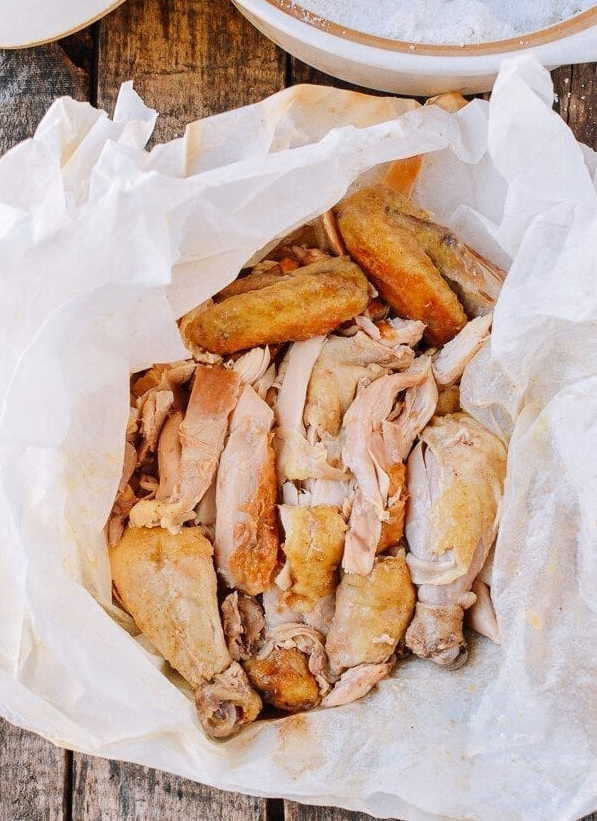
Kam’s court, a chinese restaurant in Charmhaven, which was established in 1992. A friendly, family restaurant that has always been a good party place for family gatherings. We provide delicious and popular Chinese cuisine and are licensed. We invite you to come and enjoy our warm and friendly hospitality.
Red Cooked Pork
Today, we come to you with Hong Shao Rou, our grandma’s version. She makes it with tofu and hard-boiled eggs, which she explains is the “real Shanghai style. ” Again, Hong Shao Rou is a famous dish from mainland China, consisting of braised pork belly. We’ve had it so many ways growing up. Sometimes Grandma puts bamboo shoots in there, sometimes it’s a different kind of tofu.
But this one, with the tofu puffs, is definitely one of my favorites. These pillows of golden tofu absorb all the sauce like a sponge, which makes for some serious awesomeness on a plate.
Recipe Instructions
Start by cutting up your pork belly.

Then fill a pot with cold water and submerge your eggs. Put the pot on the stove and gently bring it to a boil. Once it’s boiling, boil the eggs for about 5 minutes. Then take them out and allow them to cool in a bowl of cold water for 5 minutes. Peel them and set them aside.

After that’s done, boil some more water in a large pot. Add the pork to the boiling water and blanch for about 3 minutes to get rid of excess fat and other impurities. Then drain and rinse the meat.

Make sure your wok is clean and dry. Over medium low heat, add about 3 tablespoons of sugar to the dry wok (no oil)—preferably rock sugar. Toss the sugar around. You’ll see it start to turn an amber color – which is the origin of the name, “red cooked pork”.

Let it melt until it becomes almost a syrup.

Add the meat to the pan in 1 layer (still no oil necessary).

Let the meat brown on all sides, about 10 minutes. You’re drooling already, aren’t you?

Then add ½ cup Shaoxing wine, 2 tablespoons dark soy sauce, 2 tablespoons regular soy sauce and a cup of water. Stir.

Cover the wok and simmer over medium-low heat for 1 hour. Check it periodically to make sure that it’s not too dry, adding a little water when necessary. Take your peeled eggs and score them lengthwise to let the sauce into the crevices of each egg. Add them to the pan and gently coat them in the sauce, being careful not to break them up.

Simmer for another 15 minutes (continue to add water in small increments if needed) and then take the eggs out of the pan (you don’t want to overcook them). Taste the sauce at this point for salt.
If it needs a little more, add a dash of soy sauce 1 teaspoon at a time, until it’s right. We found that you didn’t need much more beyond the initial 2 tablespoons, but let your own taste buds be the judge.
Then add your tofu puffs! Stir those babies in gently.

Simmer for another 20 minute

Give everything another stir and add your eggs back in.

Plate and serve grandma’s red cooked pork with plenty of rice! I’m about to pass out over how good this is.
Kam’s court, a chinese restaurant in Charmhaven, which was established in 1992. A friendly, family restaurant that has always been a good party place for family gatherings. We provide delicious and popular Chinese cuisine and are licensed. We invite you to come and enjoy our warm and friendly hospitality.
Spicy curry shrimp
This shrimp curry recipe is a subtle yet richly flavored curry that complements prawns perfectly. It tastes wonderful and is a very easy meal to prepare when you are in a hurry. Make sure to remove the shrimp tails before adding them to the skillet. Serve with rice.
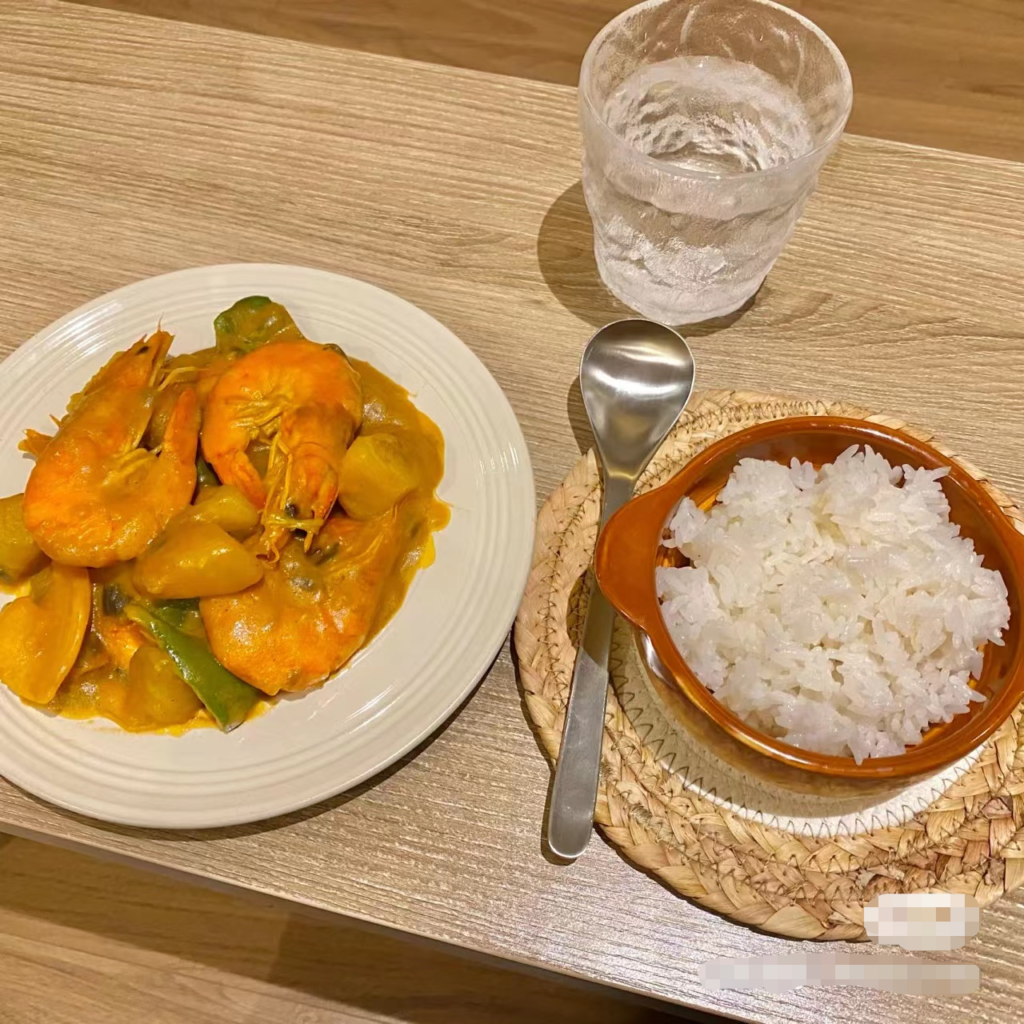
This Spicy Shrimp Curry is loaded with juicy shrimp, an extra flavorful sauce and all of the spices! Best loaded into a bowl with rice and garlic naan.
This particular recipe has been on repeat at our house! It’s well balanced, so delicious and who can pass up a warm and cozy bowl of spiced curry?! It’s incredible and I can’t wait to tell you all about it! But first off…
If you didn’t know, curry is a cuisine that originated in the Indian subcontinent. It apparently stems from the Tamil word “Kari” which means sauce or soup. Curry powder itself, however, originated in Britain in the 18th century.
And if you’re curious, most classic curry powders consist of beloved ingredients/spices like coriander, turmeric, chiles etc.
However you make a curry dish though, you can always count on it being deliciously warm, spiced well and the perfect consistency between a saucy soup and stew.
Why You’ll Love This Dish:
First off – it’s SO balanced. Yes, you do have a lot of spices in it but with the deliciously creamy coconut milk it really helps mellow out those flavors for an incredible dish!
I usually love using chicken in curries…and while I do think it has great flavor, I absolutely loved the shrimp in this!
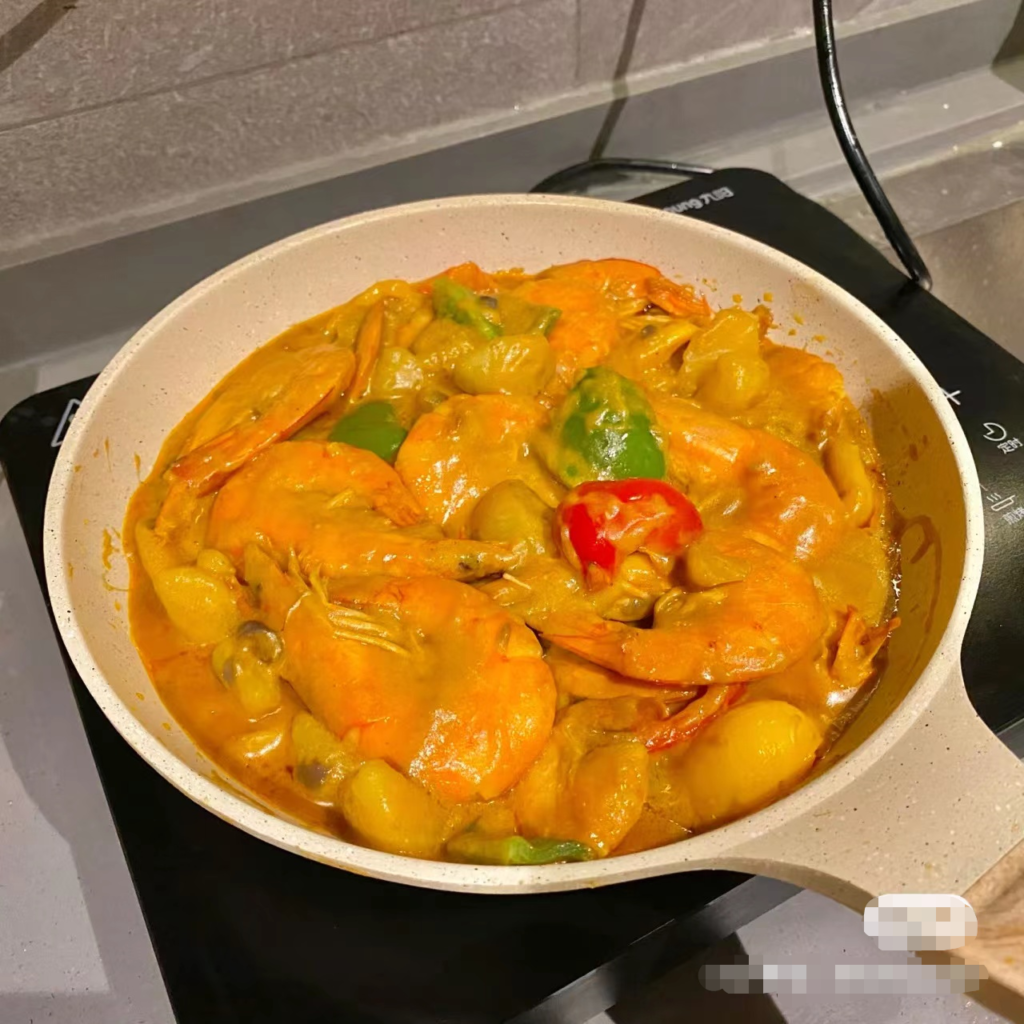
Ingredients You Need:
- Raw, peeled + deveined jumbo shrimp (can keep the tails on or off)
- Crushed tomatoes
- Full fat coconut milk
- Yellow onion
- Fresh garlic and ginger
- Lime
- Curry powder, cumin, turmeric, coriander, cayenne pepper, red pepper flakes, salt
- Jasmine rice
- Garlic naan
- Cilantro
Best Tips for Making Curry:
As always, my biggest tip is to go ahead and chop up everything you need for this recipe. For this, you’ll need to chop:
- Diced onion
- Minced garlic
- Minced ginger
Once you have that done, set it aside. Add a splash of oil to a large and DEEP sauce pan on medium heat. Take the thawed and ready to go shrimp and add them into the pan. Cook the shrimp on each side, flipping halfway for about 2-3 minutes or until they turn opaque. Once they’re done, remove them onto a plate.
If needed, add another little bit of oil to the pan and then add in the onions with a pinch of salt. Cook those for 3-4 minutes. Then add in the fresh garlic and ginger and let it cook about 1 minute.
And now time for spices!!
Stir in the spices with the veggies and cook for 1-2 minutes.
Next, add in the coconut milk and the diced tomatoes. Stir until combined and then let that mixture come to a boil.
Reduce the heat once it’s boiling, cover and let that simmer for about 10-15 minutes or until it begins to thicken. Be sure to stir it occasionally!
Once it has thickened up – taste it and adjust seasoning if desired. If you want it more spicy, go for it!
Once the sauce is where you want it spice wise, add back in the shrimp and stir to coat the shrimp.
Serve with rice and buttered garlic naan and you’re all set for an incredible dinner!
Kam’s court, a chinese restaurant in Charmhaven, which was established in 1992. A friendly, family restaurant that has always been a good party place for family gatherings. We provide delicious and popular Chinese cuisine and are licensed. We invite you to come and enjoy our warm and friendly hospitality.
What is Tom Yum Soup
Tom yum is a type of Thai hot and sour soup where the iconic flavours come from 3 herbs: lemongrass, galangal, and makrut (kaffir) lime leaves. I call these herbs the “tom yum trinity.” It can be made with any meat or seafood, even leftover cooked meats, but the most popular version is made with shrimp, i.e. tom yum goong (goong means shrimp).
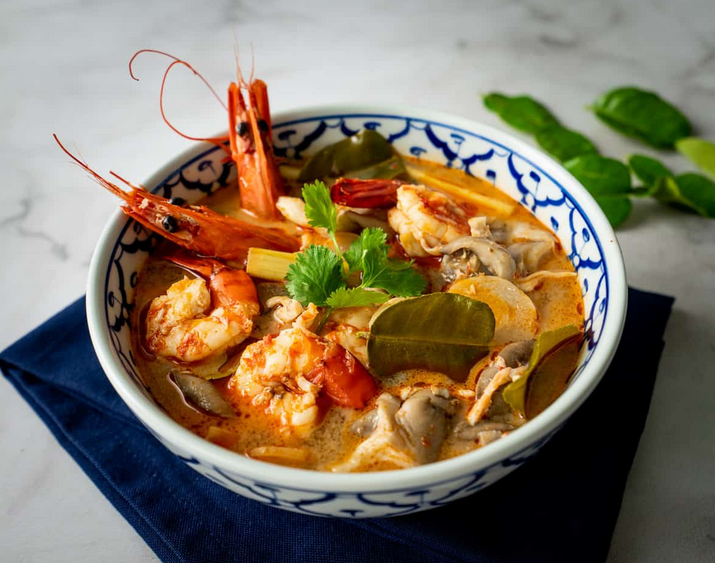
If I had to pick a national dish for Thailand this would be a strong contender because it’s eaten all over the country and is loved by essentially everyone. It’s served at street-side eateries, fancy restaurants, and is commonly made at home. It was also a staple in my elementary school cafeteria!
There are tons of different versions, and the tom yum flavour is so good it has been turned into other dishes like tom yum spaghetti, tom yum fried rice – and even tom yum pizza which was introduced by Pizza Hut in Thailand! You can also make a delicious tom yum stir fry or what we call “dry tom yum.”
Ingredients You’ll Need

Here are all the ingredients for tom yum soup, with notes on possible substitutions.
Medium to large shrimp, head-on, shell-on preferable. The shrimp shells and heads are for making shrimp stock for maximum shrimpiness. If not available, you can use chicken stock. See the FAQ below if you want to use other proteins.
Chicken stock, if not using shell-on shrimp. Unsalted chicken stock is preferable so that we can add an appropriate amount of fish sauce without it becoming too salty.
Makrut lime leaves (previously known as kaffir lime leaves). If fresh isn’t available look for frozen. Dried can work, but double the amount. For more info on this, watch my guide to makrut lime leaves video.
Lemongrass. Fresh is best as it is the main flavour of the soup, but whole frozen lemongrass is fine (not chopped). Dried isn’t ideal, but it’s workable; you’ll have to experiment with amounts but you can keep adding until the flavour really comes through. Do not use powdered. For more info, watch my guide to lemongrass video.
Galangal. That’s the knobby thing that looks a bit like ginger. Frozen or dried will work as a substitute. Worst case, you can omit it and your soup will still be tasty. Do not substitute with ginger, which tastes very different. For more info, watch my guide to galangal video.
Thai chilies, amount is to taste.
Thai chilli paste/chili jam. Known as nam prik pao in Thai, this is a sweet-savoury thick paste that you can buy or make at home using this recipe. See more on this ingredient below.
Fresh lime juice. Fresh is the key word here.
Fish sauce. Use good quality fish sauce as it is the main seasoning. Watch my fish sauce tasting/guide video for recommendations.
Sugar
Oyster mushrooms, or another type of Asian mushrooms such as shimeji, enoki or fresh shiitake. If you can find them, straw mushrooms are the most common type used in tom yum in Thailand. Don’t use button mushrooms, they’re not nearly as good in soups.
Cilantro for garnish. Sub green onions if you don’t like cilantro.
How to Make Tom Yum Soup
Make the shrimp stock by sauteing shrimp shells and/or heads until the bottom of the pot starts collecting browned bits.
Deglaze with water and scrape all the stuck bits from the bottom of the pot.
If using shrimp heads, use tongs to squeeze out the tasty tomalley inside.
Simmer for about 45 minutes. You can add some chopped onions to the simmering stock right now if you want some added flavour.
Strain the stock and add the lemongrass, galangal, makrut lime leaves and Thai chilies.
Simmer for 5 minutes.
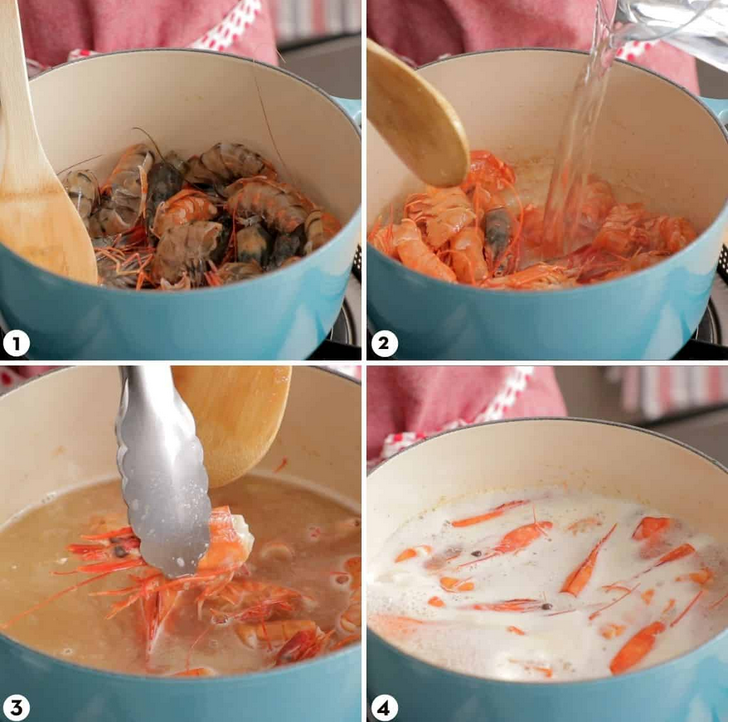
Add the mushrooms and cook for 1-2 minutes.
Add the shrimp, bring the stock back to a simmer and then turn off the heat.
Allow the residual heat of the soup to fully cook the shrimp for the next 2 minutes.
Add the Thai chili paste and fish sauce and stir to dissolve the chili paste.
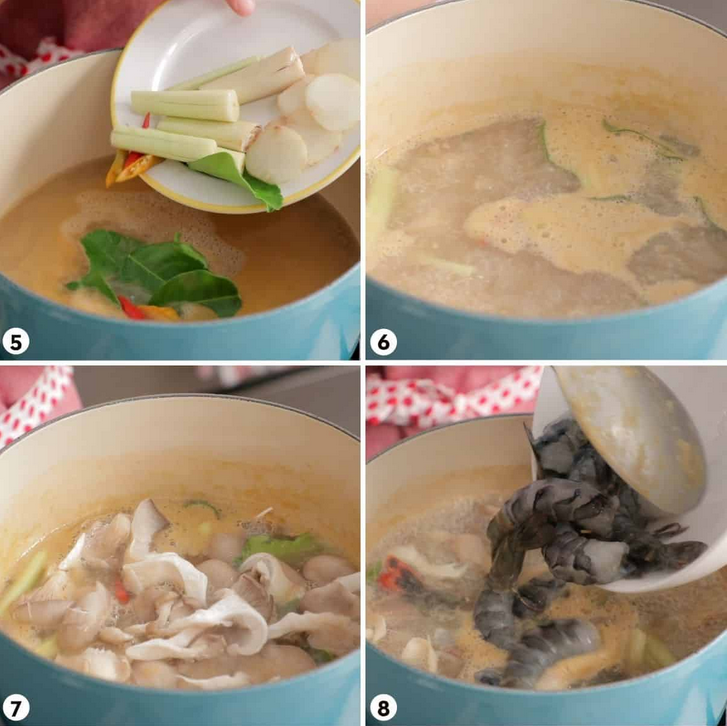
Add lime juice and then taste and adjust, adding the sugar only if needed.
It’s ready to serve! Note: the herbs are for infusion purposes only and are not meant to be eaten; however, they’re traditionally left in the soup for garnish.
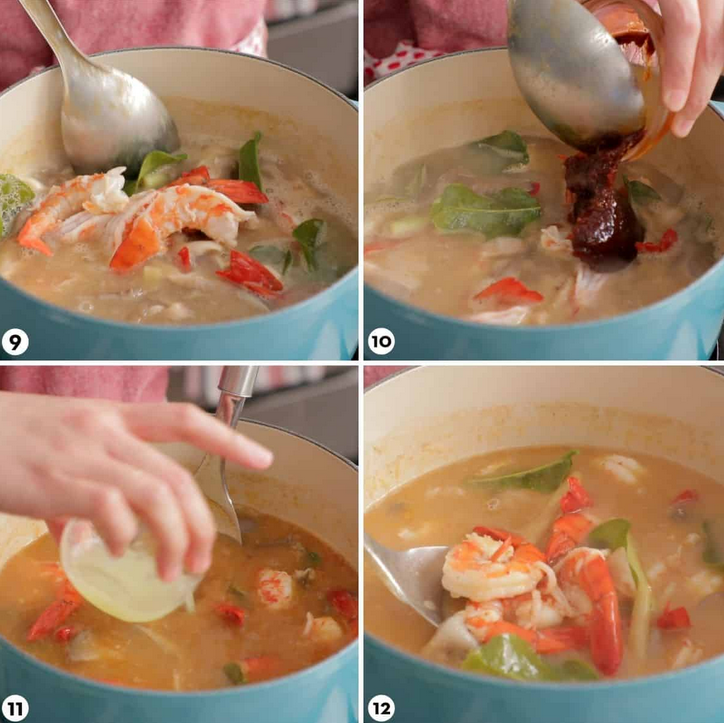
Kam’s court, a chinese restaurant in Charmhaven, which was established in 1992. A friendly, family restaurant that has always been a good party place for family gatherings. We provide delicious and popular Chinese cuisine and are licensed. We invite you to come and enjoy our warm and friendly hospitality.

